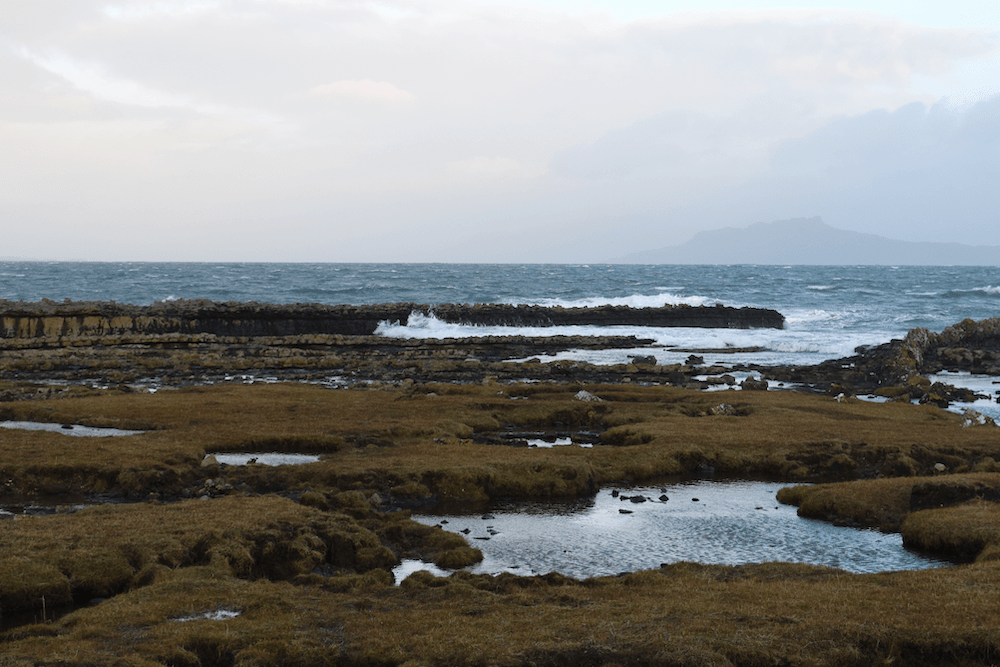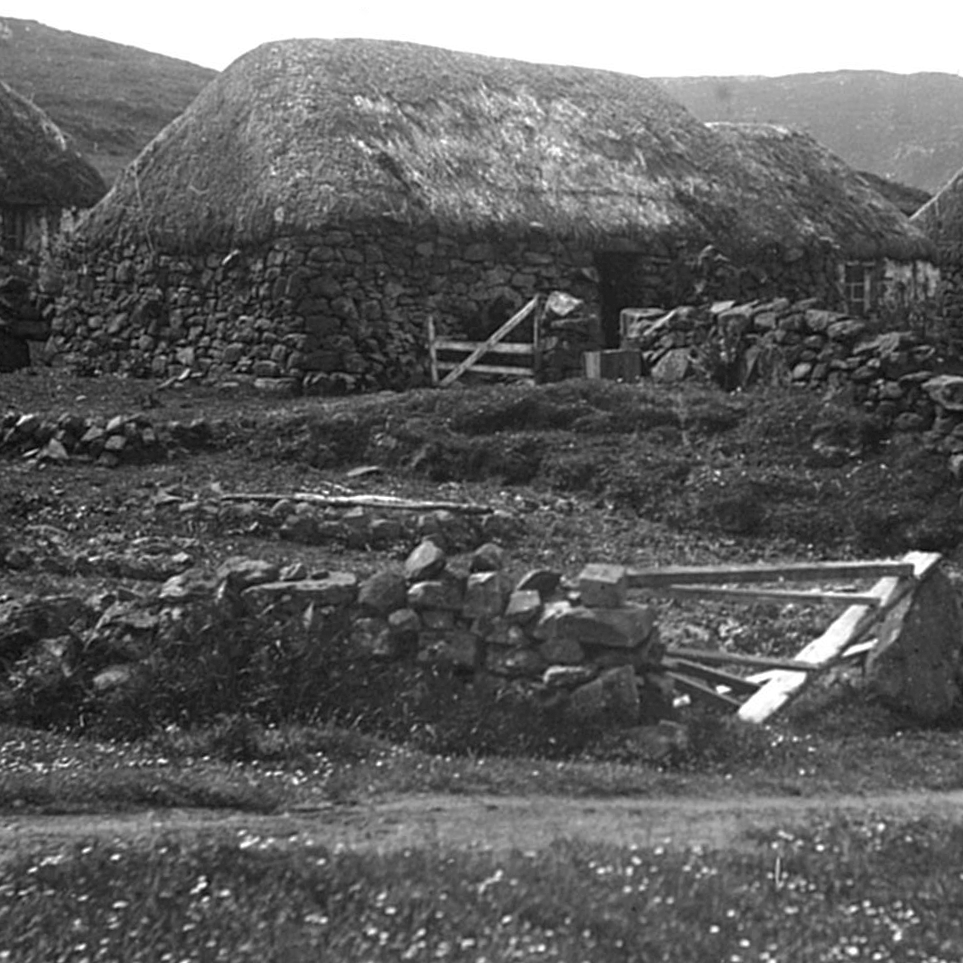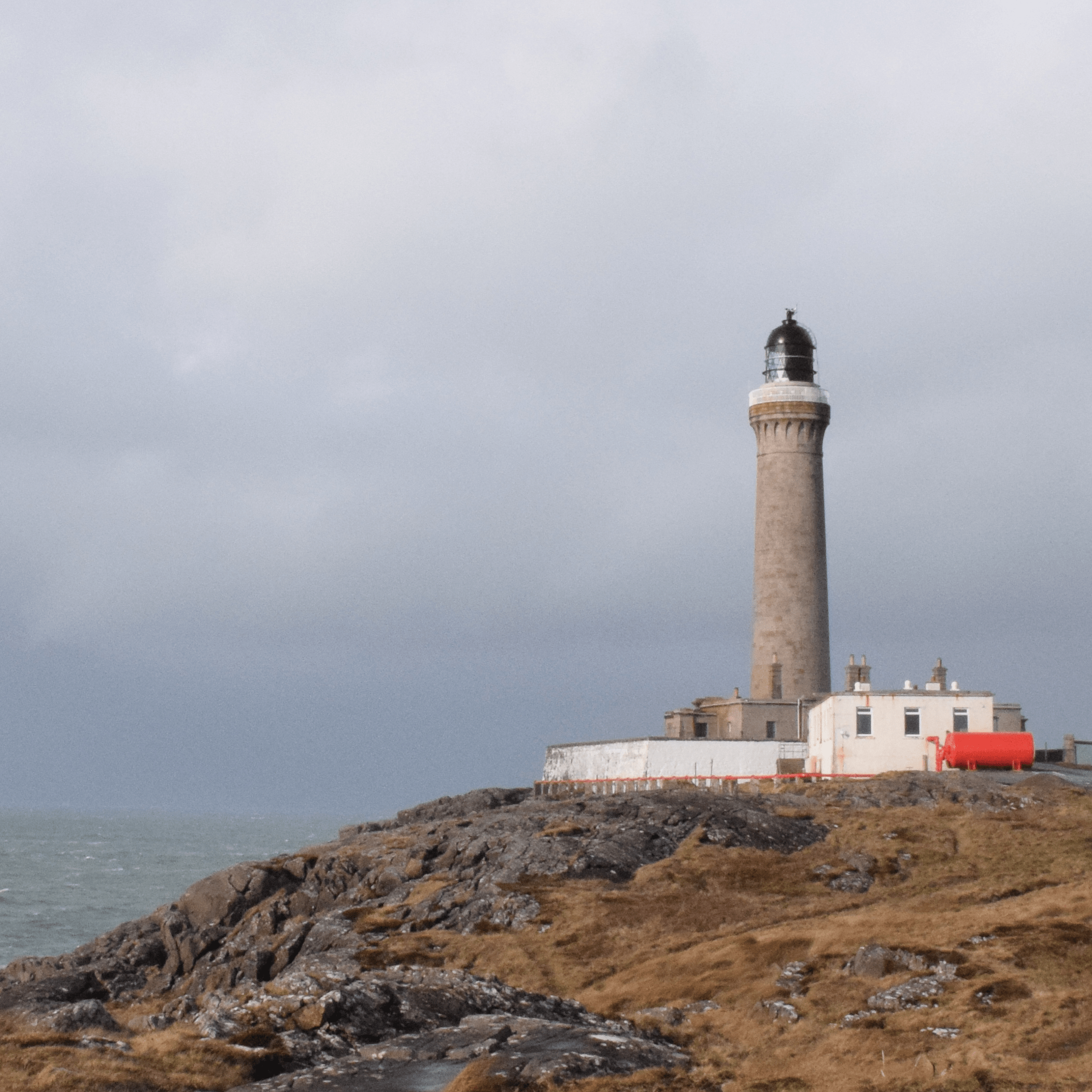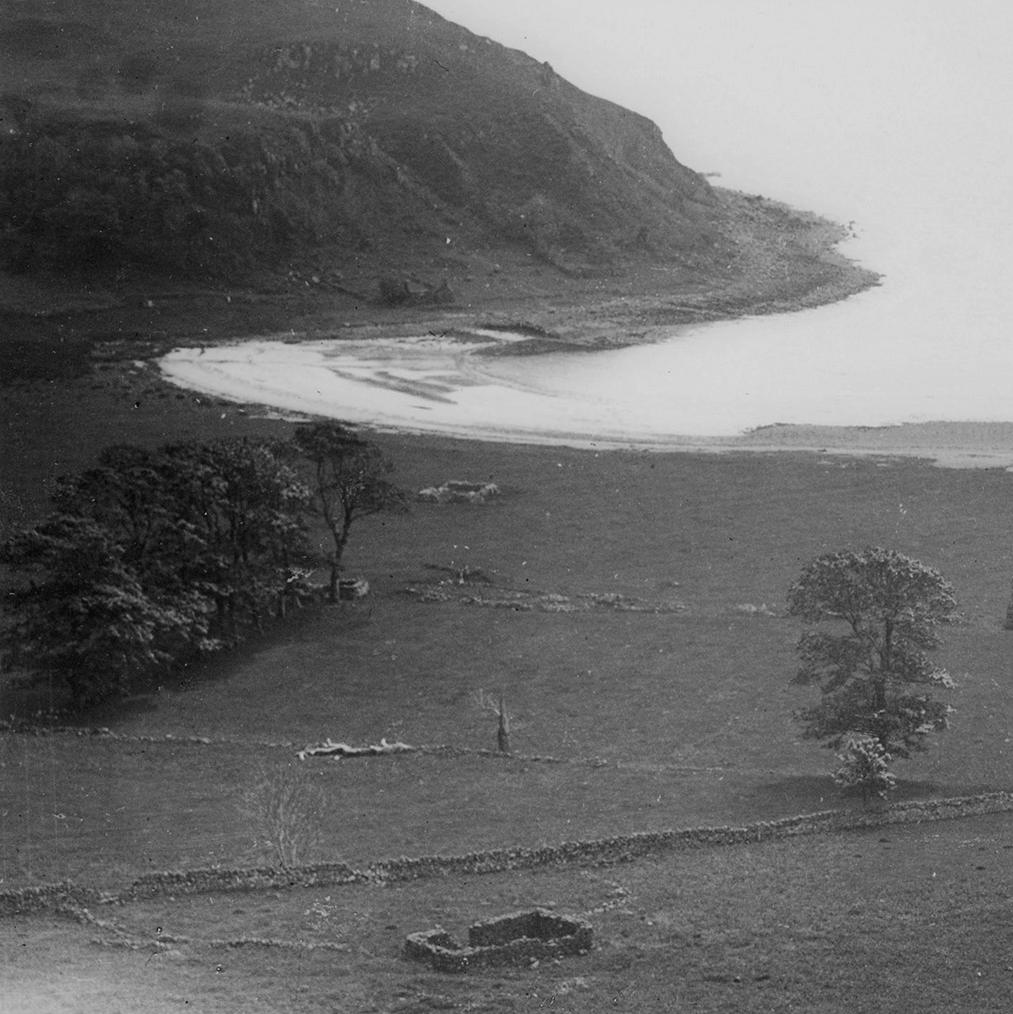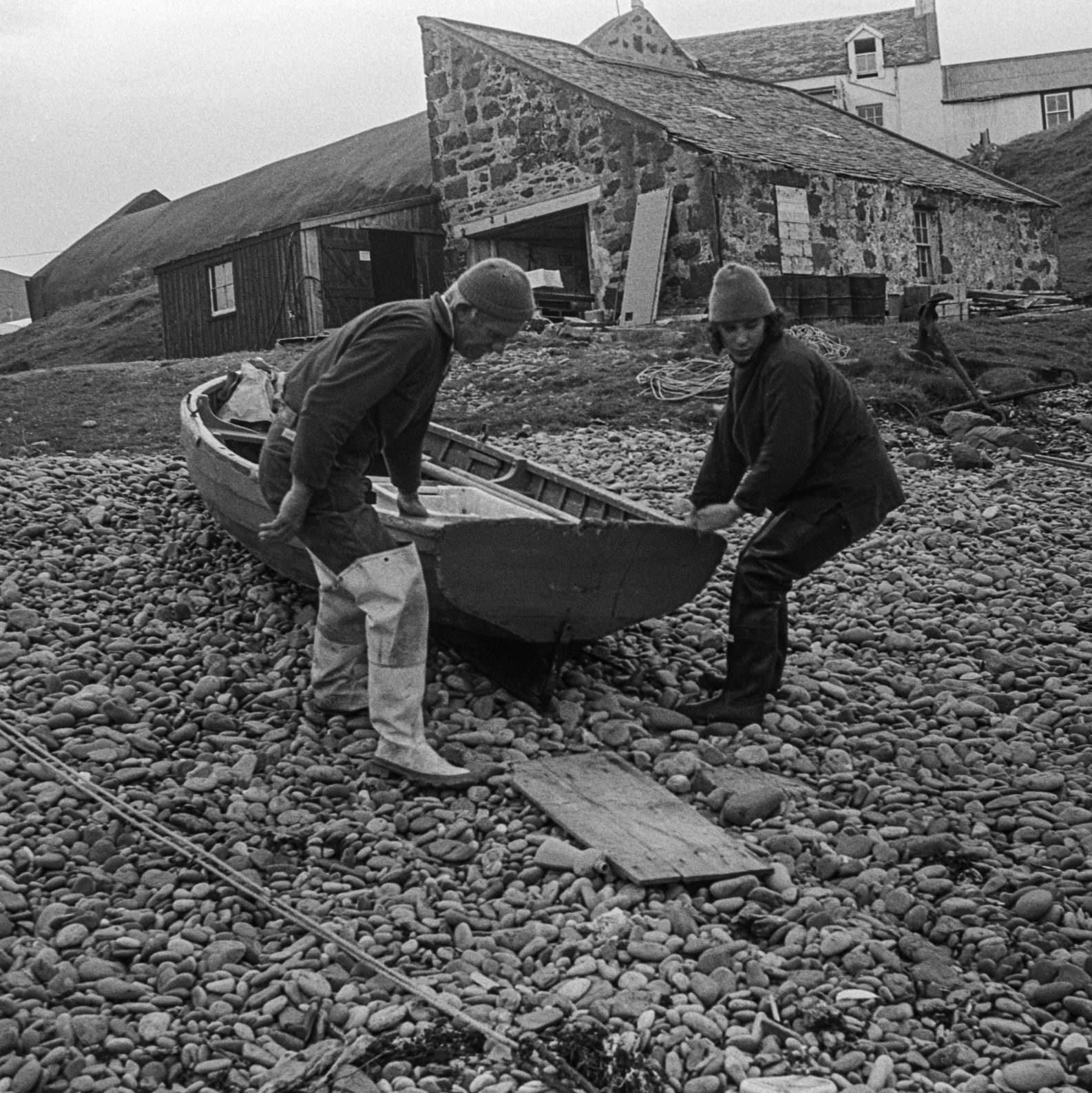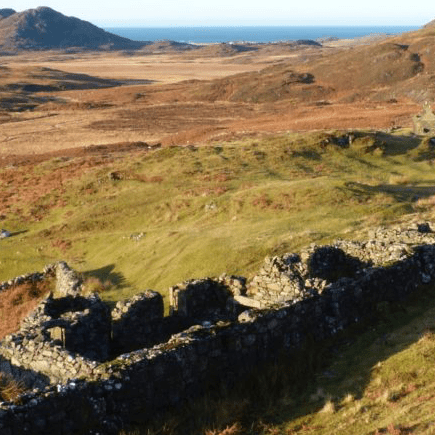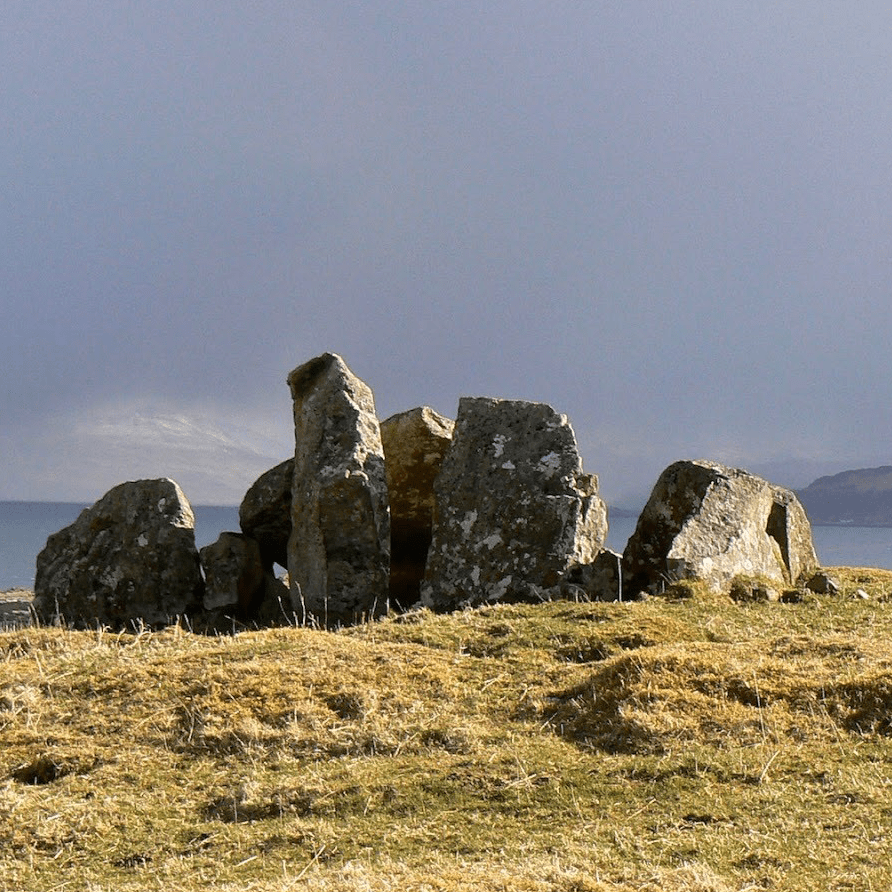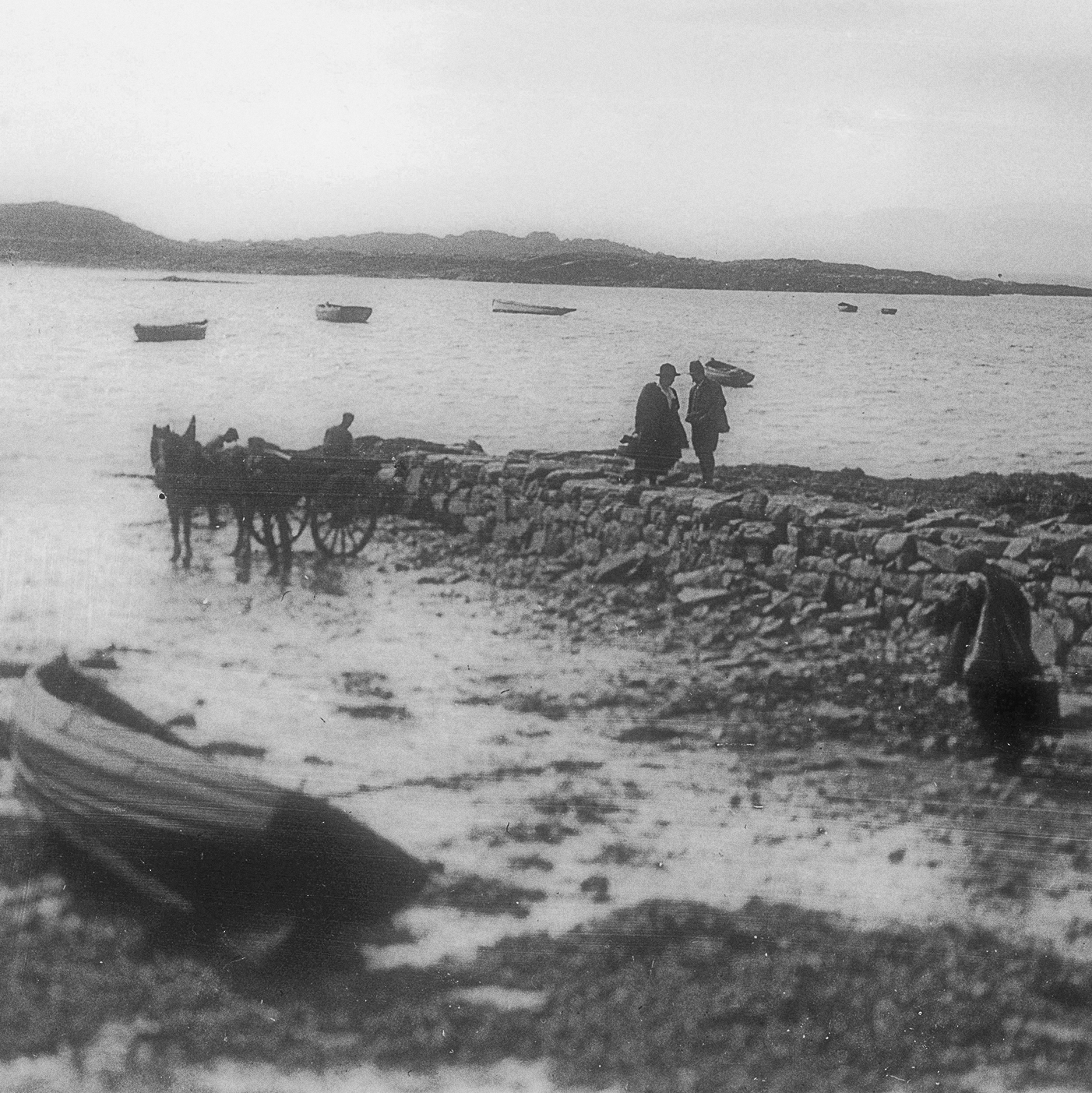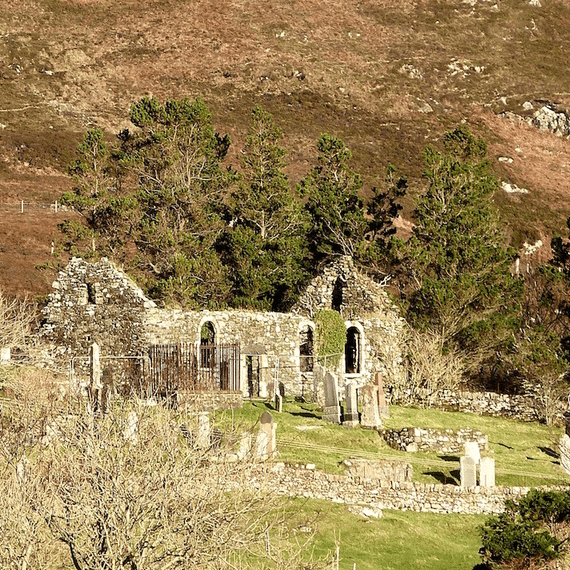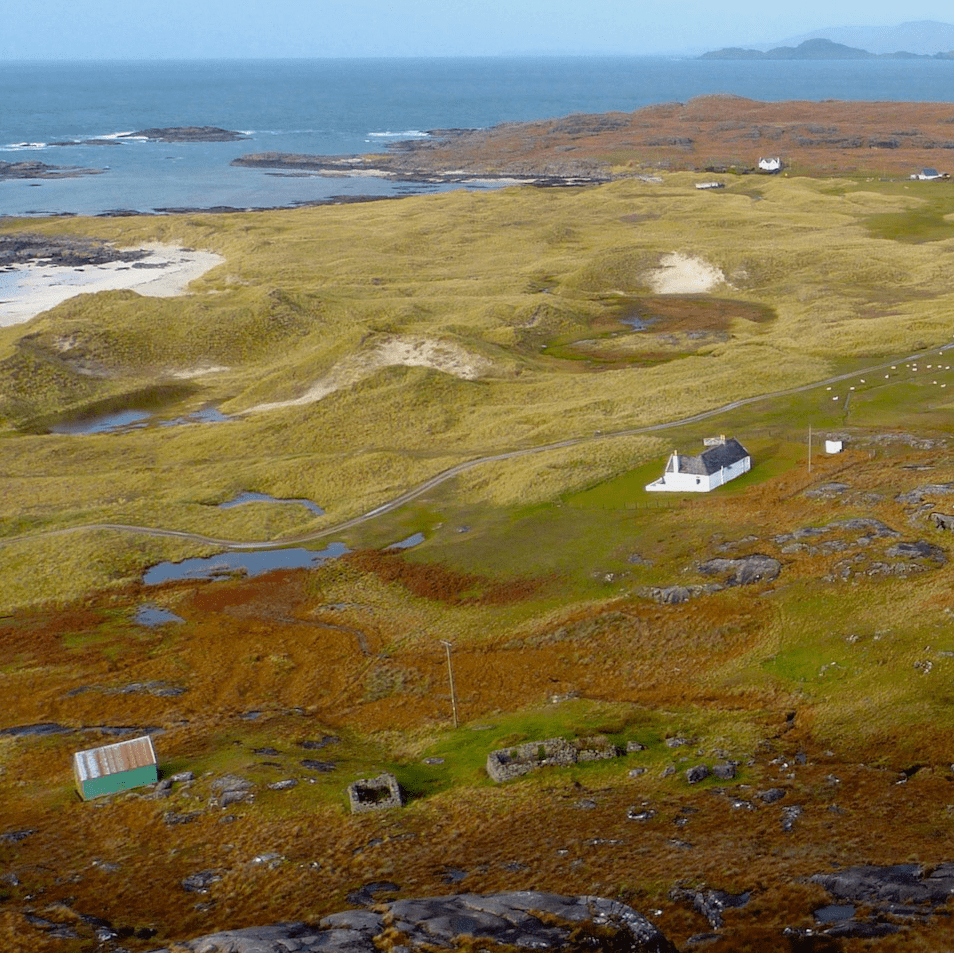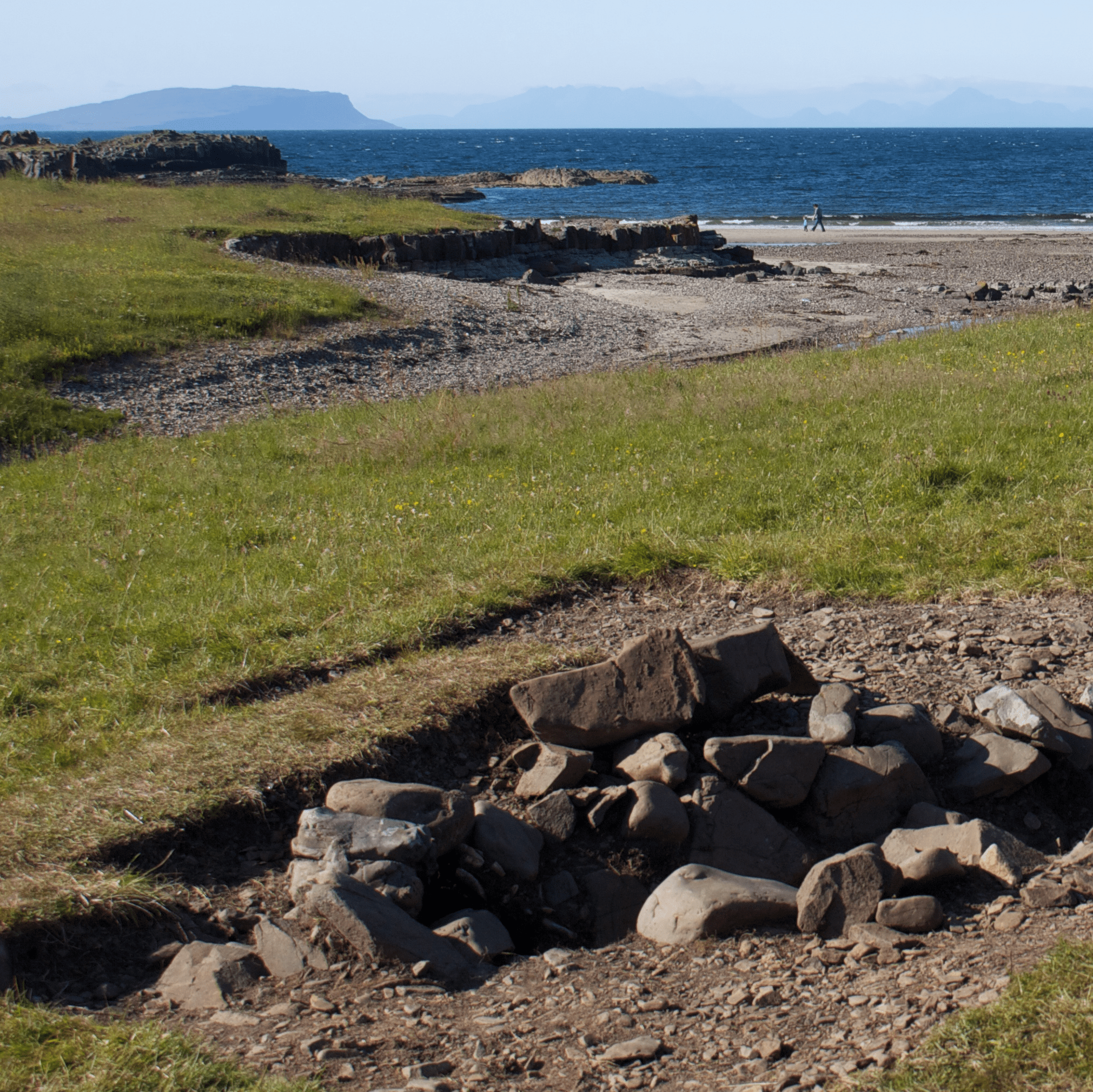Fascadale Ice House
Brief History
Salmon caught at several fishing stations around the peninsula were brought to Fascadale to be weighed, iced and boxed. Ice was collected here during the winter from the man-made pools and reservoirs, which you can still see today in the fields surrounding the ice house. Once water had frozen in the pools, the ice was drawn by pony and cart to the window at the top of the ice house and dropped inside the building to be stored, with straw between layers of ice to separate it. The freshly caught salmon was packed with the ice to keep it fresh for the journey to markets all over Britain, including Billingsgate Market in London.
Thousands of wild salmon were caught here until the 1990s. Wild salmon have been part of the natural ecosystem for millions of years, but are now in rapid decline primarily due to overfishing, pollution, and climate change.
An early 20th century salmon fishing boat - known as a Coble - was recently returned to her original home of Fascadale. She has now been repainted and sits on display in the front packing shed section of the ice house.
Pools
Ice was collected here during the winter from the man-made pools and reservoirs, which you can still see today in the fields surrounding the ice house. Once water had frozen in the pools, the ice was drawn by pony and cart to the window at the top of the ice house and dropped inside the building to be stored, with straw between layers of ice to separate it.
The Ice House
Look out for...
The rusting metal hoops and pins in the rocks that once held the fishing nets.
Discover the stories of the ice house...
It would get pretty cold out there, so when we returned to Fascadale with the dayʼs catch, we would warm up by a fire in the shed (where the Coble is now housed).
